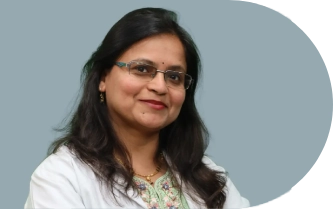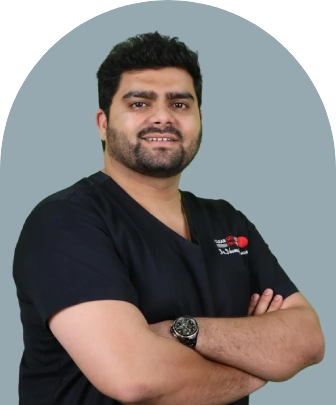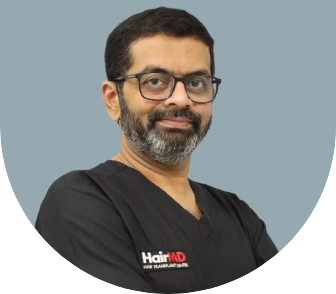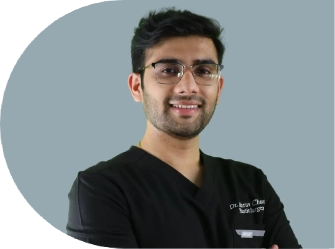Understanding the Difference Between Freckles and Melasma
Reviewed By: Dr. Dhananjay Chavan
Updated on: 10th April, 2022
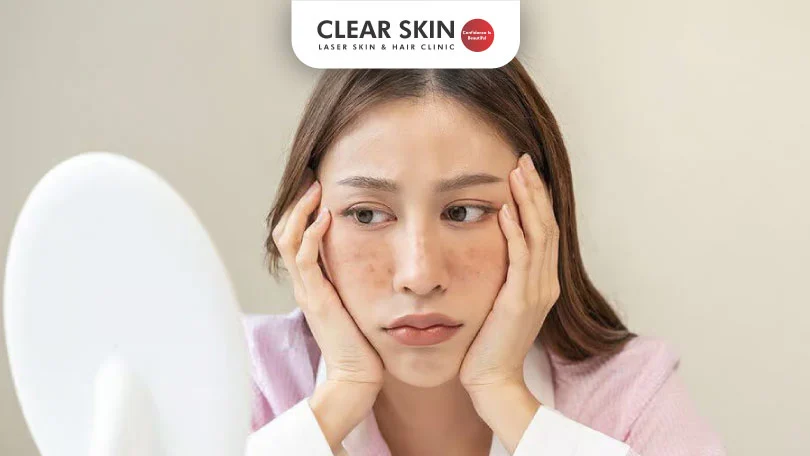
Have you ever looked in the mirror and noticed brown spots on your skin? Do they resemble freckles, or are they larger and more unevenly distributed? You may wonder if these are just freckles or if they could indicate something more serious, like melasma. So this blog will put the freckles vs melasma fight to rest!
Freckles are small, flat skin spots usually caused by genetics and exposure to the sun. On the other hand, melasma is a type of hyperpigmentation often caused by hormonal changes, such as during pregnancy, menopause, or taking birth control pills.
While freckles and melasma may seem similar at first glance, they are distinct in their causes, appearance, and treatment options. Understanding the differences can help you better care for your skin and achieve a more even complexion. So, let’s take a closer look at freckles vs melasma and learn how to keep our skin healthy and radiant.
Table Of Content
- What are Freckles and Melasma?
- Causes of Freckles and Melasma
- Treatments for Freckles and Melasma
- Conclusion
What are Freckles & Melasma?
Freckles are clusters of melanin, the pigment that gives colour to our skin, hair, and eyes. They appear as small, flat, circular spots that are usually tan or light brown. Freckles are most common in fair-skinned individuals, and they tend to appear on areas of the skin that are exposed to the sun, such as the face, shoulders, and arms.
Freckles often appear on children’s faces. But freckles are not just for kids – they can also add a youthful and fresh vibe to adults. Furthermore, freckles are a symbol of uniqueness and individuality. No two freckles are the same and can vary in size, shape, and colour from person to person.
There are two main types of freckles: ephelides and solar lentigines.
Ephelides
These are the most common type of freckles and are usually found in people with fair skin. They are flat, small, and tan or light brown in colour. Ephelides become more visible in the summer due to increased exposure to sunlight.
Solar Lentigines
Also known as “sunspots,” these freckles are larger and darker than ephelides and are usually found on areas of the skin that have been exposed to the sun for many years, such as the face, arms, and hands. Solar lentigines are more common in people over 40 and can be a sign of sun damage to the skin.
Coming to Melasma
Melasma, also termed chloasma or the “mask of pregnancy,” when it appears in pregnant women, is a skin condition that causes dark, discoloured areas on the face. The condition is significantly more frequent in women than in males; however, men can also acquire it.
Melasma is characterised by dark patches rather than spots. While it usually appears on the face, melasma might develop on other parts of your body that are frequently exposed to sunlight.
Melasma is classified into three categories based on the level of pigment in your skin
Epidermal Melasma
It is caused by an excess of melanin in the skin’s superficial layers. This is usually light brown in colour.
Dermal Melasma
Here the pigment is deposited in the deeper layer of skin and hence looks greyish or bluish in colour.
The Mixed Type
This type of melasma has both superficial and deep components.
Causes of Freckles & Melasma
Both freckles and melasma are seen when there is excess melanin pigment deposited in the skin. The exact cause of why freckles are spots and why melasma forms patches is unknown but is related to genes and external influences. Understanding the different causes can help you to know freckles vs melasma. A few factors that strongly play a role are –
Genetics
Freckles are mostly hereditary, meaning they can be passed down from generation to generation. If your parents or grandparents have freckles, you may be more likely to develop them too. Melasma also has a genetic component but is not seen in all.
Sun Exposure
Sun exposure, especially UV damage is one of the strong triggers for melasma. People with melasma often have a history of long-standing sun exposure. Freckling is also known to increase with sun exposure.
Hormonal Changes
Hormonal changes and fluctuations especially those seen with pregnancy, menopause, stress are known to trigger melasma or increase melasma. These hormonal changes are also known to increase freckles in a person who has freckles.
Age
Freckles can be seen from a very young age and tend to increase with age. Melasma on the other hand is not seen in children and it often starts after 20-30 years of age.
Skin Type
People with fair skin and light-coloured eyes are genetically more prone to have freckles. Whereas melasma is more common in Asian skin and darker skin tones.
Treatment for Freckles & Melasma
Freckles
Freckles are generally harmless and do not require medical treatment. However, some people may wish to lighten or remove their freckles for cosmetic reasons. Freckles are generally superficial and highly sensitive to sun exposure. As a result, they are many times easy to lighten and treat with topicals, lasers and sun protection.
Melasma
Melasma on the other hand is a little difficult to treat and requires multiple treatments according to the type of melasma. If pregnancy or birth control pills or other hormonal imbalances have induced melasma, it may fade in some women once the hormones are regularized.
Some treatment tips and options for treating freckles vs melasma are –
Sun Protection
The best way to prevent freckles from getting worse and new ones from forming is to protect your skin from the sun. Wear protective clothing, use broad-spectrum sunscreen with an SPF of at least 30, and avoid prolonged exposure to the sun, especially during peak hours.
Good sun protection also helps in improving melasma patches and preventing them from worsening. As such sunscreen and sun protection are the first steps in melasma treatment.
Topical Creams
Several topical creams are available that can help lighten freckles and melasma. These creams usually contain hydroquinone, retinoids, kojic acid, glycolic acid, arbutin etc—these creams inhibit melanin production in the skin, reducing the hyperpigmentation
Chemical Peel
Chemical peels involve applying a solution to the skin that exfoliates the outer layer of the skin, revealing fresh, new skin underneath. This can help to lighten freckles, and melasma and even out skin tone.
Laser Therapy
Laser therapy uses intense light to break up the pigment in the skin, which can help to lighten freckles. This is a more invasive treatment and may require multiple sessions. For melasma, milder treatments like laser toning are used to help reduce the symptoms of melasma.
Do You Know?
Roughly 250 Patients Are Treated
Everyday By These Dermatologists
(You are one click away from flawless skin)
Meet Our Dermatologist!
Conclusion
While freckles and melasma may appear similar at first glance, they are different skin conditions with different causes and treatments. Freckles are caused by genetics and sun exposure, while melasma is often related to hormonal changes and sun exposure.
The good news is that both conditions can be managed with proper sun protection, appropriate treatment, and exploring freckles vs melasma.
Clear Skin Clinic Pune understands that freckles and melasma can be frustrating and affect self-esteem. That’s why our team of expert dermatologists is dedicated to providing personalised treatment options for these skin conditions.
Book your consultation today and say goodbye to freckles and melasma and hello to a radiant complexion with Clear Skin Clinics Pune.
Further Reading
Does Makeup Cause Acne-Prone Skin?
Worried about breakouts from using makeup? Does makeup cause acne for you? Learn the safe ways to apply makeup for acne-prone skin.
Morning Skin Care Routine for Glowing Skin
Clear Skin Clinic, led by top dermatologists, shares the ideal morning skincare routine to help you achieve a radiant complexion naturally and effectively.
Monsoon Skin Care Tips for Radiant, Healthy Skin
Clear Skin Clinic, led by top dermatologists, shares the ideal morning skincare routine to help you achieve a radiant complexion naturally and effectively.
How To Take Care Of Oily Skin in Monsoon?
Oily skin care in monsoon focuses on gentle cleansing, hydration, and protection to reduce breakouts, greasiness, and help maintain skin balance daily.
Have thoughts? Please let us know
We are committed not only to treating you, but also educating you.

